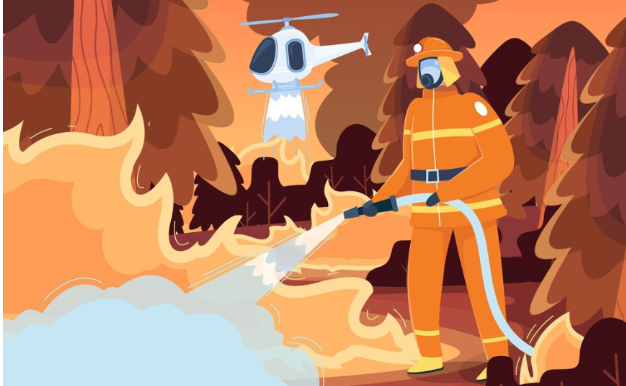How Wildfire Retardant Spray Helps Slow the Spread of Wildfires

Wildfires are a growing threat across many regions of the world. They can destroy homes, wildlife habitats, and forests, posing serious dangers to people and communities. One of the key tools used by firefighting teams to control and manage wildfires is wildfire retardant spray. This chemical solution plays a critical role in slowing down the spread of fires, giving firefighters more time to protect lives and property.
What is Wildfire Retardant Spray?
Wildfire retardant spray is a specially formulated chemical solution designed to slow the burning of vegetation and other combustible materials. It is usually made from a mixture of water, fertilizers, and other chemicals that create a barrier on plants and soil. When sprayed over an area, it can reduce the fire’s speed and intensity, allowing emergency teams to contain the blaze more effectively. Unlike water, which only extinguishes fire temporarily, retardant spray creates a longer-lasting layer that helps prevent fire from spreading quickly.
How Wildfire Retardant Spray Works
The primary way wildfire retardant spray works is by coating plants and trees with a chemical barrier. This barrier makes it more difficult for flames to ignite and burn through the vegetation. The chemicals in the spray can absorb heat and reduce the temperature at the surface, which slows down the combustion process. Additionally, some formulations release moisture slowly, helping to keep the treated areas damp and less flammable.
When applied ahead of an advancing fire, the retardant spray can act as a firebreak. This means it creates a zone that is harder for the fire to cross, giving firefighters time to build containment lines and manage the fire safely. By slowing the spread, the spray also reduces the overall area affected by the wildfire, which helps protect wildlife, forests, and communities.
See also: What to Look for Before You Buy a Business
Application Methods
Wildfire retardant spray is commonly applied using both aerial and ground methods. Airplanes and helicopters can drop large quantities of retardant over wide areas quickly, making them ideal for hard-to-reach locations or rapidly spreading fires. On the ground, firefighting crews use specialized vehicles and hoses to apply the spray directly to vegetation, roadsides, or structures at risk. The choice of method depends on the size of the fire, the terrain, and the accessibility of the affected area.
Environmental Considerations
While wildfire retardant spray is a valuable firefighting tool, it is important to use it responsibly to minimize environmental impacts. The chemicals in some formulations can affect soil quality or water sources if used excessively. Modern retardants are designed to be safer for wildlife and plants, but careful planning and targeted application remain essential. Firefighting teams often coordinate with environmental experts to ensure the spray is applied in a way that maximizes fire control while protecting the surrounding ecosystem.
Benefits of Wildfire Retardant Spray
The use of wildfire retardant spray provides multiple benefits during wildfire emergencies. One of the main advantages is the ability to slow fire movement, reducing the risk to homes, communities, and critical infrastructure. It also allows firefighters to work more safely, as they can approach the blaze with a controlled buffer zone. In addition, by slowing the fire, the spray helps prevent larger and more destructive fires, ultimately saving resources and reducing damage costs.
Another key benefit is that the retardant spray can support long-term fire management strategies. Firefighting agencies often combine the use of retardant with other techniques, such as creating firebreaks and controlled burns. This comprehensive approach helps manage wildfire risk more effectively and protects both people and the environment.
Conclusion
Wildfires are increasingly dangerous, and effective tools are essential for managing their spread. Wildfire retardant spray is a vital part of modern firefighting efforts. By creating chemical barriers, slowing fire spread, and providing firefighters with more time to act, it plays a crucial role in protecting communities, wildlife, and natural resources. While it must be applied carefully to minimize environmental impacts, its use remains one of the most effective strategies in controlling wildfires and reducing their devastating effects.





